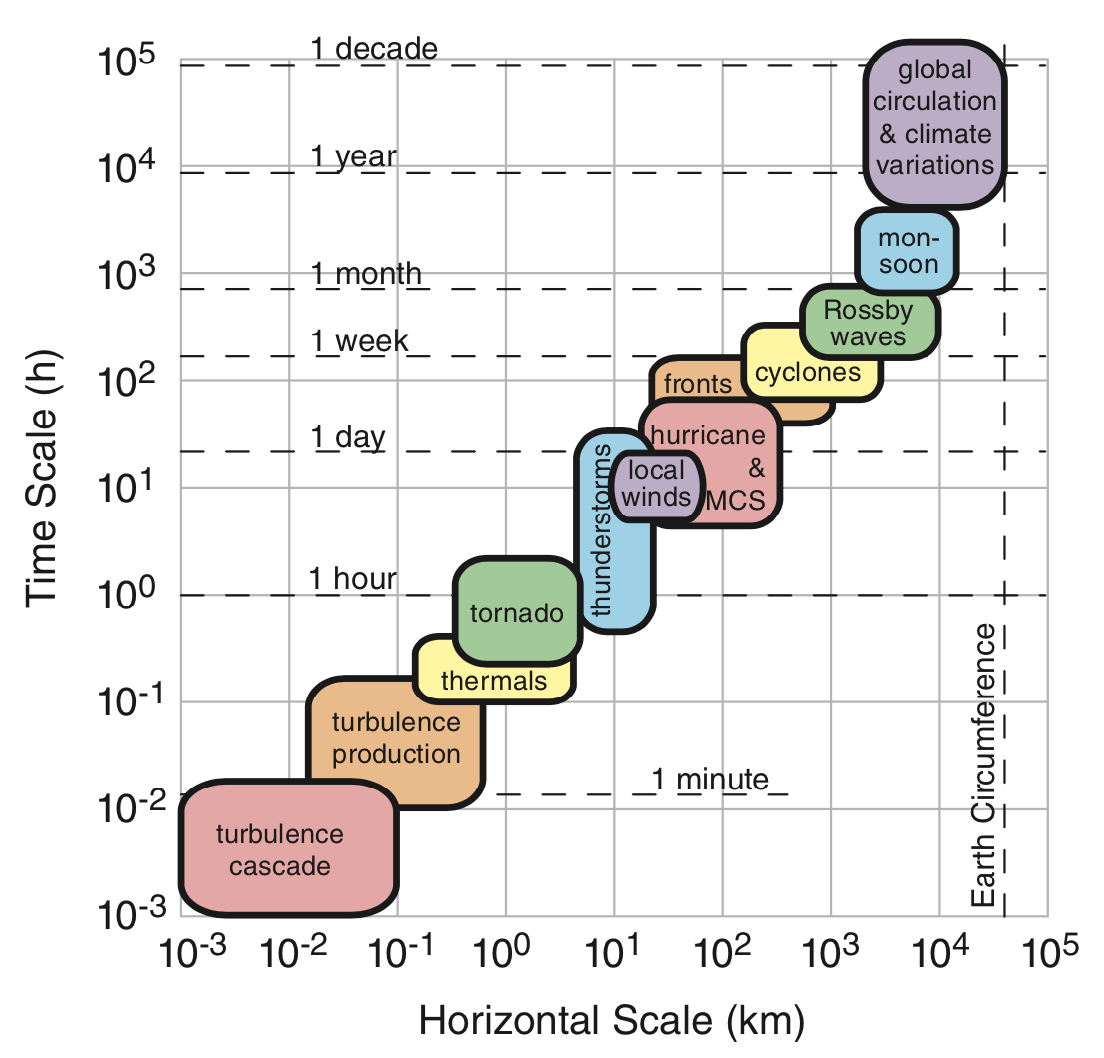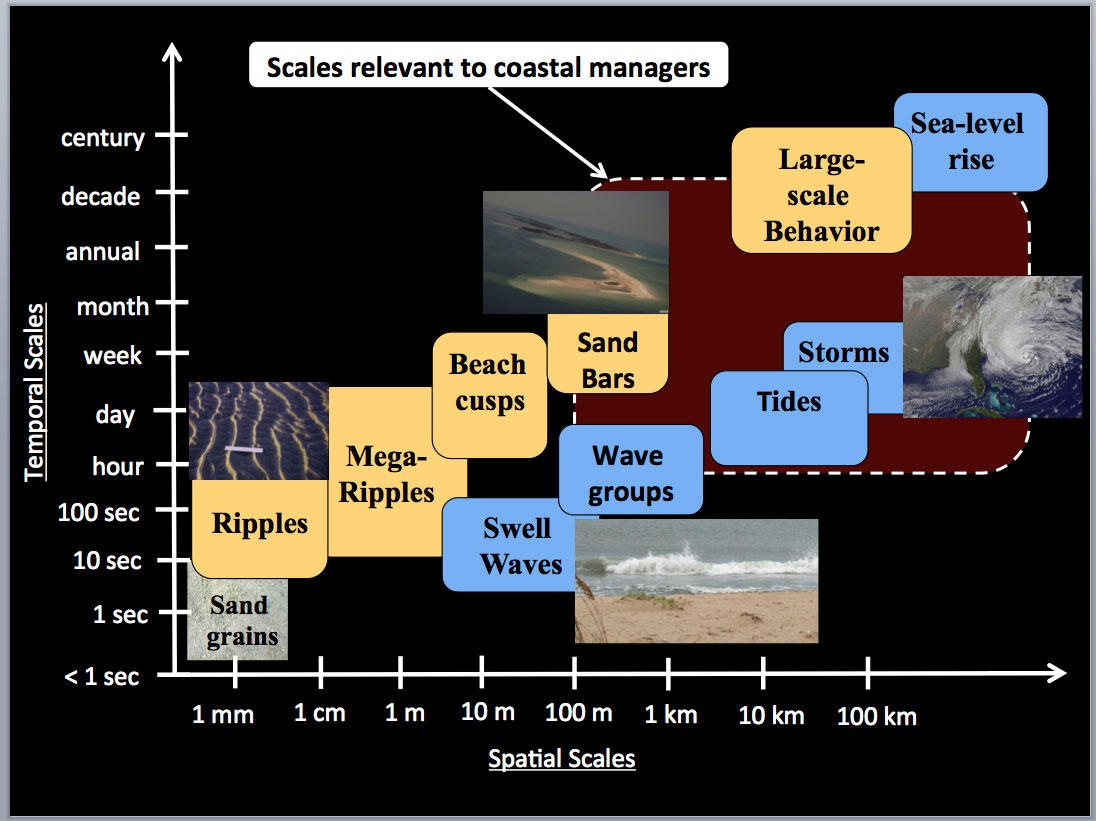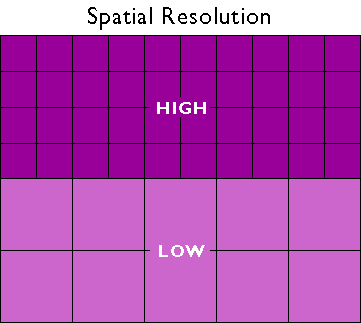Choosing Data Model
Which data model is better?
TopHat Question 1
The spatial data models we use in GIS work by taking advantage of: (select all that apply)
- Tobler’s First Law of Geography
- Causality
- Spatial Autocorrelation
- Spatial Heterogeneity
- Cheat Codes
TopHat Question 2
Bonnini’s Paradox states that: As a model becomes more complex model becomes, it becomes:
- More useful
- Less understandable
- Easier to use
- Larger
Comparing Data Models
Raster
Usually continuous fields
- Full coverage over domain
- Grid of equal size cells
- Gaps need a value
- One band per attribute
- One raster can have many bands
Vector
Usually discrete objects
- Only features of interest
- Points, Lines, Polygons
- Topology
- Many attributes per object
- Attribute table links spatial and non-spatial data
Advantages
Raster
Good for continuous variables
Features that do not have distinct boundaries
Simple data structure
Overlay is easy and efficient
Vector
Good for discrete objects
Features that are have distinct, fixed in boundaries
Compact data structure
More efficient storage
Easy to query and select by attributes
Disadvantages
Raster
- Mixed pixel problem
- One attribute per cell
- Large data volumes
Vector
- No variability within polygons
- Complex data structure
- Overlay can be computationally expensive
TopHat Question 3
Select the best method for representing each phenomena:
- Precipitation observations from weather stations across Canada
- Precipitation forecasts for an atmospheric river
- Census tracts in Metro Vancouver
- Hiking trails in Garibaldi Park
Resolution & Scale
These properties can influence our choice of model.
- How does the scale of our analysis dictate our desired resolution?
- How can resolution of the data limit the scale of our analysis?

Resolution & Scale
These properties can influence our choice of model.
- How does the scale of our analysis dictate our desired resolution?
- How can resolution of the data limit the scale of our analysis?

Resolution & Scale
These properties can influence our choice of model.
- How does the scale of our analysis dictate our desired resolution?
- How can resolution of the data limit the scale of our analysis?

Resolution & Scale
These properties can influence our choice of model.
- How does the scale of our analysis dictate our desired resolution?
- How can resolution of the data limit the scale of our analysis?

Resolution & Scale
We want to work with high resolution data because:
↑ resolution = ↓ generalization = ↓ uncertainty
- Isn’t always possible. High resolution data may:
- Be too expensive $$$
- Take too long to collect or process
- Infringe on individuals privacy
- Strike a balance: what suits our needs without adding unnecessary risk, expense, or complexity?
Things to consider
What is the “lowest” acceptable resolution?
- Smaller scale analysis won’t need the same level of detail.
- Looking at national immigration patterns, maybe you only need provincial level data?
Things to consider
Change the scope of our analysis?
- If you need a high resolution analysis, work at a larger scale and focus on a small area.
- If you need to analyze a large area, work at small scales and accept the uncertainty that comes with coarser resolution.
Working Together
Frequently we work with both raster and vector data.
- In Module 1, you worked with:
- Cholera deaths (points)
- Vector Data Model
- Kernel density (probability of deaths)
- Raster Data Model
- Cholera deaths (points)

Working Together
In the Module 4 you are working with both data models.
- NDVI Data (Raster)
- Census Data (Vector)

Working Together
Exploring two approaches:
- Zonal Statistics:
- Faster, but more limited applicability.
- Conversion:
- Requires more work, but is more flexible.

TopHat Question 4
Which of the following are true (select all that apply):
- Scale is a property of your analysis while resolution is a property of your data.
- Scale is a property of your data while resolution is a property of your analysis.
- Scale and resolution are properties of your analysis.
- We always want to work with the highest resolution data available.
- Both the raster and vector data models are useful ways to represent spatial data.
TopHat Question 5
How do you feel about the pace of lecture and the lab workload so far?
- The pace of lecture is too fast and the lab workload is overwhelming.
- The pace of lecture is good and the lab workload is overwhelming.
- The pace of lecture is good and the lab workload is manageable.
- The pace of lecture is too slow and the lab workload is manageable.
- The pace of lecture is too slow and the lab workload is too easy.